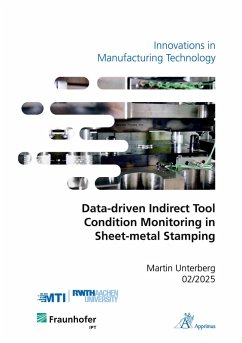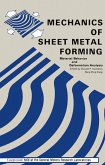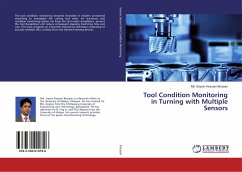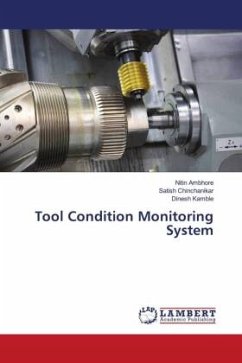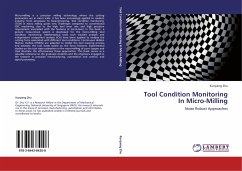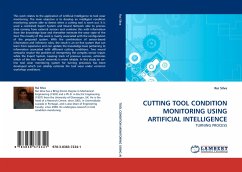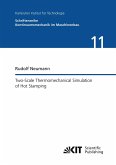The increasing scarcity of energy and the resulting rise in energy prices significantly impact operating costs in production facilities. This trend is particularly pronounced in sheet-metal stamping, where the use of higher-strength steels for lightweight construction leads to higher process friction, which increases the cost pressure on already tight margins due to unpredictably high tool wear. Due to the closed tool design, direct condition monitoring of sheet-metal stamping tools is not feasible. This dissertation addresses these challenges by presenting a systematic approach for data-driven indirect condition monitoring of sheet-metal stamping tools using acoustic emission signals. Acoustic emission sensors are suitable signal sources for tool condition monitoring due to their cost efficiency and high information content of the signals. However, acoustic emission signals are difficult to process and interpret due to their complexity. For this dissertation, 398,047 fineblanking process cycles from industrial and laboratory settings were acquired, preprocessed, and analyzed using a combination of machine learning and signal processing methods. Through domain-specific preprocessing, a process image representing the friction conditions between sheet metal and punch was isolated and exploratively analyzed. This data analysis revealed systematic patterns within and between the collected datasets that indicate a correlation with punch wear. To model the wear of the punch, a critical tool component, the quality of the sheared surface of the scrap web was observed and evaluated as a proxy variable for the punch wear in the laboratory setting. This proxy variable was used to generate labels for supervised machine learning models and to predict these labels from the acoustic emission data of the shearing and stripping phases of the fineblanking process. Evaluation of the models from a model performance and an explainable AI perspective, as well as analyses of the punches, revealed that adhesive wear of the shearing edges of the punches is a likely root cause of sheared surface quality degradation of the scrap web. These results were used to develop a scalar indicator for the tool condition, and the evolution of this indicator was evaluated for the datasets from the industrial setting. The analyses showed that the developed indicator allows the identification of problematic sequences of fineblanking process cycles based on the strength of its dispersion.
Bitte wählen Sie Ihr Anliegen aus.
Rechnungen
Retourenschein anfordern
Bestellstatus
Storno

